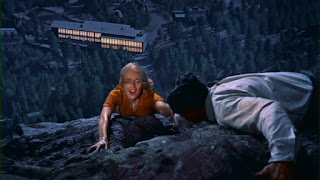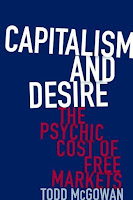Roland Barthes:
Using semiotics is the basis on how to conduct a close analysis of a film or a television series. Roland Barthes's work on Mythologies is one of the founding texts for this type of analysis. And to keep things simple, I will focus on the terms: denotative and connotative.
Denotative Meanings:
Denotative is the surface level of a sign. For example, if I see a stop sign while driving, I know to stop my car. It is a sign that we can all agree upon - at least I hope we do.
Connotative Meanings:
Connotative is the secondary level of a sign. This means there can be multiple meanings of a sign. For example, I could read the sign "snake" not only as a slimy reptile, but as "sin." The surface reading (denotative) of a snake means a reptile and it slithers. The secondary reading (connotative) of a snake could mean "sin," or it could mean "friend." I preferably would not like to think about snakes at all! But you get the point...
Rhetoric: Making Your Case Convincingly
Rhetoric is the art of persuasion. A connotative approach to studying film or television involves how well you can argue your case. This means when you unpack secondary meanings (connotations), you have to make your case convincingly. To do this, you must inventory the signs of a film and or television episode.
"Walkabout" Example
Lost is a television series about the survivors of Oceanic 815 stranded on a mysterious island. "Walkabout" is an early episode in the first season that focuses on John Locke (Terry O'Quinn), a mysterious man who decides to hunt for a boar after learning the survivors had ran out of food.
"Walkabout" involves Locke's journey into the mysterious island. This odyssey entails a physical component (find and kill the boar), and an interior component (Locke's re-birth). We can track these two registers by inventorying the episode's signs.
Locke's Wheel Chair
The wheel chair is more than simply a means of transportation; it is also about Locke's backstory and his internal struggles before he crashed on the island, which is told through flashbacks. His wheel chair has an added charge of meaning when we learn that Locke can walk after surviving the airplane crash at the end of the episode.
Movement and Stillness
Locke is shown a number of times lying on his back, looking at his feet. Movement has multiples meanings, especially when you consider the title of the episode: "walkabout." It is a spiritual renewal for Locke.
Locke is re-born as he learns to walk again. The fire framed by his wheelchair at the end of the episode helps to communicate this at the connotative level. He is no longer the same person we saw in the episode's flashbacks.
There are many connotations I could have discussed in this episode. But I chose signs that are tied to a specific theme: Locke's re-birth as a "walkabout" in his hunt for the boar. At the end, he successfully kills the boar and provides food for the survivors. At the same time, Locke's soul is nourished by the hunt in the form of a walkabout.
































































